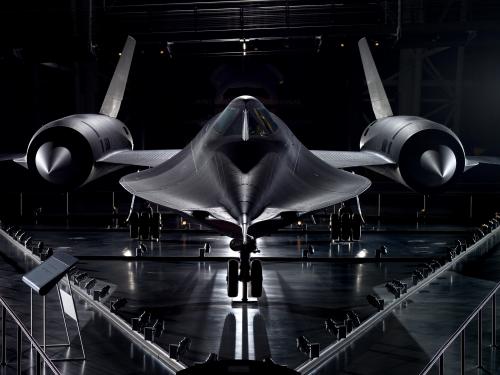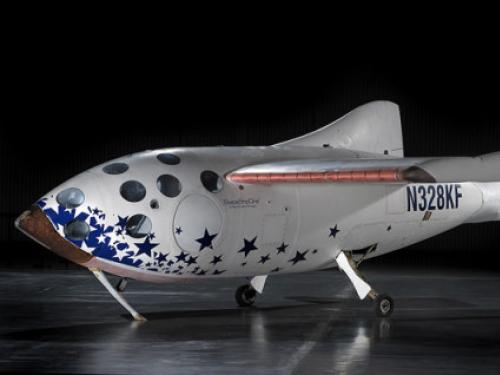
Stories of daring, stories of technological feats, stories of prevailing against the odds ... these are the stories we tell at the National Air and Space Museum. Dive in to the stories below to discover, learn, and be inspired.
Showing 51 - 60 of 87

July 15, 2016
“What is your favorite artifact?” When you work at a museum that is the question people always ask you. Most of my museum colleagues say it’s impossible to pick just one. I agree.

June 15, 2016
Half a century ago, in February and June 1966, robotic spacecraft first landed on the Moon. I vividly remember those events from my days as a 14-year-old space buff. On February 3, the Soviet Union’s Luna 9 thumped down on the vast lava plain known as Oceanus Procellarum (Ocean of Storms), after a number of failed attempts. A Soviet stamp shows its landing configuration, which used air bags to cushion its fall. On the right is the first picture transmitted, from the turret camera in the cylinder on top.

March 03, 2016
I recently shared that we uncovered handwritten notes and markings inside the Apollo 11 Command Module Columbia—the spacecraft that carried astronauts Armstrong, Collins, and Aldrin into lunar orbit and home on their historic voyage of July 1969. As part of our collaboration with the Smithsonian’s Digitization Program Office to create a detailed 3D model of the spacecraft, we had access to previously inaccessible areas for the first time in many years. We found notes written on a number of locker doors and even a small calendar used to check off days of the mission. We did our best to imagine the circumstances surrounding the creation of these markings. In the weeks that have passed, I have been working with an extraordinary team of experts to see what we can learn about each of the markings we documented, especially the more technical numerical entries. Today, we are posting the Apollo Flight Journal (AFJ) website, a detailed account of all the information we’ve gathered so far.

December 15, 2015
Fifty years ago, on December 15, 1965, Gemini VI and VII met for the first rendezvous in space. This was not NASA’s original plan.

September 02, 2015
The National Air and Space Museum's full-scale mockup of the Pioneer 10 spacecraft was recently moved to its new location in the Boeing Milestones of Flight Hall as a part of a major renovation to the gallery.

August 25, 2015
For the past decade, SpaceShipOne has been on display as one of the hanging artifacts in the Boeing Milestones of Flight Hall. It was specifically positioned to depict the aircraft in its initial stage of powered flight (30 degrees, nose up attitude) just after release from its White Knight mother ship, which carried it aloft to an altitude of about 14,326 meters (47,000 feet). In March of this year, SpaceShipOne was lowered to the floor as part of a major renovation of the Milestones gallery. During this time, it received a thorough condition assessment and photo documentation by conservator Sharon Norquest. After surface cleaning and minor conservation work is completed, it is scheduled to be rehung this week and will be one of the major artifacts in the new Boeing Milestones of Flight Hall, scheduled to open in July 2016. The renovation project provided us with a unique opportunity to consider how we showcase SpaceShipOne in the future.

August 22, 2015
On July 13 and 14, I was invited to visit the Johns Hopkins University Applied Physics Laboratory in Laurel, Maryland, for the New Horizons Pluto Flyby Events.

August 21, 2015
On July 14, the New Horizons spacecraft completed a 9.5-year-long, 4.8-billion kilometer (3-billion mile) journey to the object furthest from the Sun to be visited by a spacecraft.

July 10, 2015
As we await the exciting results of New Horizons’ flyby of Pluto on July 14, it is all too easy to think that this mission was inevitable: the capstone to NASA’s spectacular exploration of all the planets (and ex-planets) of the solar system since the 1960s. Yet, it proved extraordinarily difficult to sustain a Pluto project.

June 03, 2015
The first spacewalk by an American, which took place June 3, 1965, marked a new chapter in human exploration of space. Images of Edward White II floating in space with the backdrop of a beautiful blue and white Earth spread a sense of wonder around the world – humans could actually go to this place and it was amazing. While the spacewalk (or EVA, which stands for extra-vehicular activity) lasted less than 20 minutes, its significance for the future of human spaceflight in the American context cannot be underestimated.